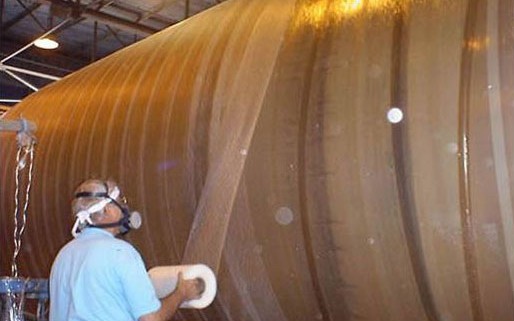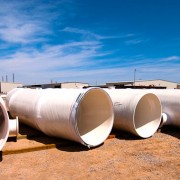FRP Material Properties Put to Use
Viable solutions to complex problems—that’s what we all want in the end, right? For decades civil engineers have been seeking out alternatives to traditional materials of construction such as steel alloys. FRP, a relatively new class of composite material have proven to be economical and efficient with respect to the repair of buildings and structures in a broad range of industries. Fiber Reinforced Polymer composites are defined as a polymer (plastic) matrix, either thermoset or thermoplastic, that is reinforced (combined) with a fiber or other reinforcing material with a sufficient aspect ratio (length to thickness) to provide a discernable reinforcing function in one or more directions.
The high strength-to-weight ratio, also known as the specific strength, is an important material characteristic, this number allows you to compare materials of different mass or applications where resistance against breaking has priority. Typically, when comparing strength of materials of equivalent thicknesses and sizes, FRP will weigh one seventh as much as steel and half as much as aluminum. Civil engineers have also come to appreciate the responsiveness of FRP materials; that is FRP responds linear-elastically to axial stress and can be custom designed and fabricated to meet engineering and end-user specifications with respect to axial compression, transverse tensile stress, and shear stress—among other things.
FRP material’s portfolio of benefits is diverse and includes important benefits to end-users such as excellent corrosion and abrasion resistance as well as overall durability—where other materials succumb to stringent and environments, FRP thrives. Corrosion resistance of FRP is a function both of resin content and the specific resin used in the laminate. Generally speaking, the higher the resin content, the more corrosion resistant the laminate.
FRP has been successfully employed in a multitude of harsh industrial and demanding structural construction scenarios including pulp and paper, oil and gas, desalination, chemical processing, waste water purification, mining and minerals, power generation, structural bridges, defense, aerospace, and marine —the list could go on and on. Regarding the industrial/commercial side of things, here are a few common corrosion resistant FRP applications; hydrochloric acid, acetic acid, wet chlorine gas, ferric chloride, hydrogen sulfide, sulfur dioxide fume, and sodium hypochlorite—this list is not all-inclusive. For a complete list you’ll want to connect with a resin-manufacture or check out a manufacture’s resin guide.
The short of it is this—FRP when designed properly is a cost-effective material that has demonstrated its durability and ability to withstand industrial conditions, but also, importantly long-term environmental exposure—a key distinction that has interested many civil engineers involved in the rehabilitation, retrofitting and complete rebuilding of bridges, other load bearing structures and or architectural elements, such as, pre-stressing tendons, reinforcing bars, and grid-reinforcements and structural columns. Regardless of what type of project type or project environment you are planning for there are likely supporting case studies available that demonstrate the opportunity, solutions and benefits realized when integrating FRP into project design.












